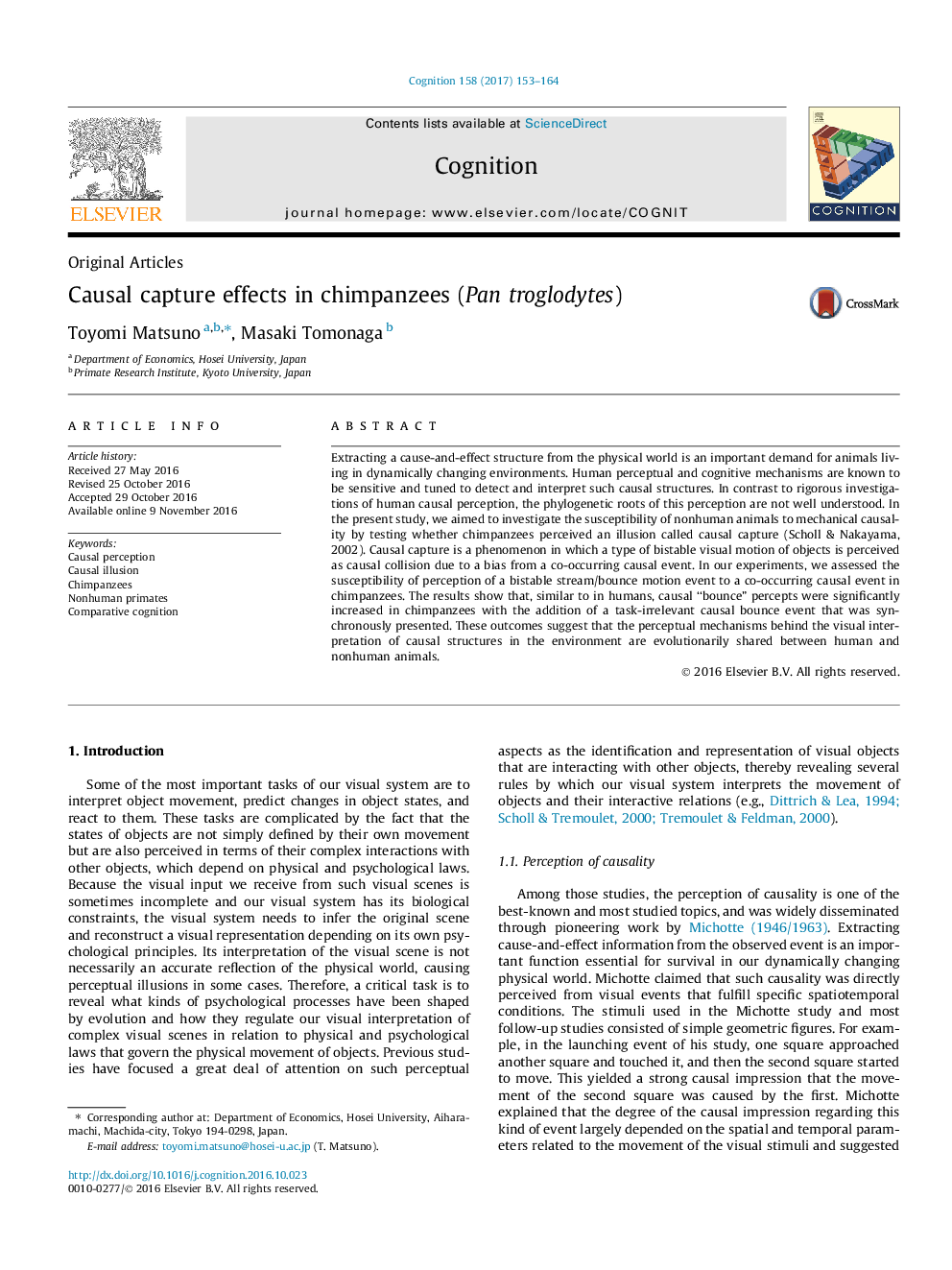| Article ID | Journal | Published Year | Pages | File Type |
|---|---|---|---|---|
| 5041689 | Cognition | 2017 | 12 Pages |
Extracting a cause-and-effect structure from the physical world is an important demand for animals living in dynamically changing environments. Human perceptual and cognitive mechanisms are known to be sensitive and tuned to detect and interpret such causal structures. In contrast to rigorous investigations of human causal perception, the phylogenetic roots of this perception are not well understood. In the present study, we aimed to investigate the susceptibility of nonhuman animals to mechanical causality by testing whether chimpanzees perceived an illusion called causal capture (Scholl & Nakayama, 2002). Causal capture is a phenomenon in which a type of bistable visual motion of objects is perceived as causal collision due to a bias from a co-occurring causal event. In our experiments, we assessed the susceptibility of perception of a bistable stream/bounce motion event to a co-occurring causal event in chimpanzees. The results show that, similar to in humans, causal “bounce” percepts were significantly increased in chimpanzees with the addition of a task-irrelevant causal bounce event that was synchronously presented. These outcomes suggest that the perceptual mechanisms behind the visual interpretation of causal structures in the environment are evolutionarily shared between human and nonhuman animals.
